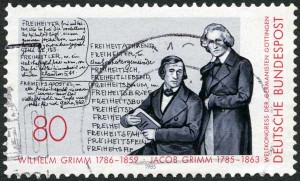 Ever wonder if testimonials really work? Are they merely traditional components of a website, or is there really power behind their words? Research indicates that testimonials are indeed impressively effective, and that the timeless art of storytelling lies at the heart of their persuasive power.
Ever wonder if testimonials really work? Are they merely traditional components of a website, or is there really power behind their words? Research indicates that testimonials are indeed impressively effective, and that the timeless art of storytelling lies at the heart of their persuasive power.
Researchers Melanie Green and Timothy Brock from Ohio State University conducted a study to determine the effectiveness of narratives in persuasive advertising.
They asked participants to read several short stories, each of which implied different beliefs and opinions. After the participants finished reading, the researchers measured how much each participant agreed with the persuasive messages associated with each story.
The results indicated that certain participants reported stronger levels of agreement than other participants. It seemed that the more participants were emotionally connected to the characters and events of the story, the more likely they were to be persuaded by the message. Green and Brock attributed this difference to varying levels of the psychological principle of transportation.
Transportation, which can be described as ‘immersion into a story,’ is the level of a reader’s emotional response to the characters and events in a story. According to Green and Brock, the more readers become wrapped up in the characters and events of a story, the more likely they will be persuaded by the underlying message. This is due to the fact that their emotional immersion leads them to be less likely to develop counterarguments. Which, in turn, means they will be more likely to be persuaded by the message imbedded within the story.
Therefore, because testimonials are, in essence, a story of another’s experience with a product or service, the principle of transportation can explain their effectiveness. The more emotional response a testimonial can evoke in the reader, the more persuasive that testimonial will be.
This highlights the importance of including testimonials that speak to the emotions of the audience. They should address areas of doubt, and counter common consumer objections associated with the product. They should also evoke positive emotions from the readers. An exceptionally effective way to achieve this kind of connection is through the use of ‘before-and-after’ scenarios.
In sum, there is no need to enlist a celebrity to endorse a product or service. In fact, readers are more likely to form an emotional connection to real stories from ‘real’ people. Thus, generate as many testimonials as possible through the use of comment boxes and even forums. The more positive testimonials displayed on a website, the more emotionally connected the readers will become.
References
Green, MC & Brock, TC (2000) The role of transportation in the persuasiveness of public narratives


